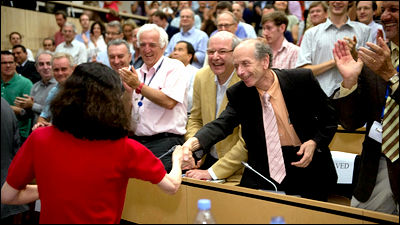CERN announces the world's largest particle accelerator construction project with a total length of 100 km and a total construction cost of 3 trillion yen

The Large Hadron Collider (LHC) in Switzerland has a total length of approximately 27 km and is known as the world's largest circular collision type accelerator at the time of article creation. In January 2019, the European Nuclear Research Institute (CERN) announced the outline of the construction project of " Future Circular Collider (FCC)", a super colossal collision accelerator which is about four times as large as LHC did. The total cost to complete an accelerator with a total length of 100 km is about 3 trillion yen, and it is said that all facilities are in operation in the latter half of the 2050s.
International collaboration publishes concept design for a post-LHC future circular collider at CERN | CERN
https://home.cern/news/press-release/accelerators/international-collaboration-publishes-concept-design-post-lhc
The LHC existing 100 meters underground in the outskirts of Geneva, Switzerland was built by CERN and started operation in 2009. LHC has a diameter of approximately 8.6 km and a total length of approximately 27 km, and its size corresponds approximately to one turn of the Yamanote line. LHC has 1232 superconducting magnets, a ring-shaped acceleration cavity, and six experimental facilities, and it discovers and observes elementary particles by colliding protons and heavy ions. In 2012, LHC is a facility that runs at the forefront of elementary particle physics that is difficult to prove, such as finding Higgs' particles whose existence was theoretically predicted by one of the experimental facilities " ATLUS ".
Mr. Peter Higgs also appeared at the scene of the photographs of the workplace where you can see how wonderful it is to discover new particles found as Higgs particles - GIGAZINE

On January 15, 2019, CERN announced the outline of the project to construct an FCC which will be a much larger gigantic accelerator than the LHC. According to this outline, the FCC will be a circular collision type accelerator with a circumference of about 100 km which is about four times LHC. FCC's design research seems to have been carried out over five years, looking for cooperation with more than 150 universities, research institutions, companies and over 1,300 people.

CERN argues that "physics beyond the standard model so far is required to observe dark matter and antimatter," FCC said, "FCC has been using electrons - positrons, protons - It will be possible to observe the collision of protons and ion - ions. "

"The goal of the FCC is to provide a superconducting proton accelerator ring capable of outputting energy up to 100 TeV (Tera Electron Volt )," Frédérick Bordry, CERN Accelerator and Technical Supervisor said, but first of all, electron-positron collision We are planning to construct an experimental apparatus. "Considering that the proton beam energy of LHC is 7 TeV, it seems that FCC can output far more enormous energy than LHC.
The following image is a prototype of a 16 Tesla superconducting electromagnet used for accelerating proton beams by FCC, and it can form a magnetic field of nearly double the strength of the superconducting electromagnet used for LHC.

CERN calculates that it will cost EUR 5 billion (about 620 billion yen) for FCC tunnel civil works and finally it will require a total of EUR 24 billion (about 3 trillion yen) if the construction of a superconducting proton accelerator is needed. The operation of the FCC itself begins by 2040 and it is said that the ultimate goal of operation of the superconducting proton accelerator will start in the latter half of the 2050s at the earliest.
Related Posts:







